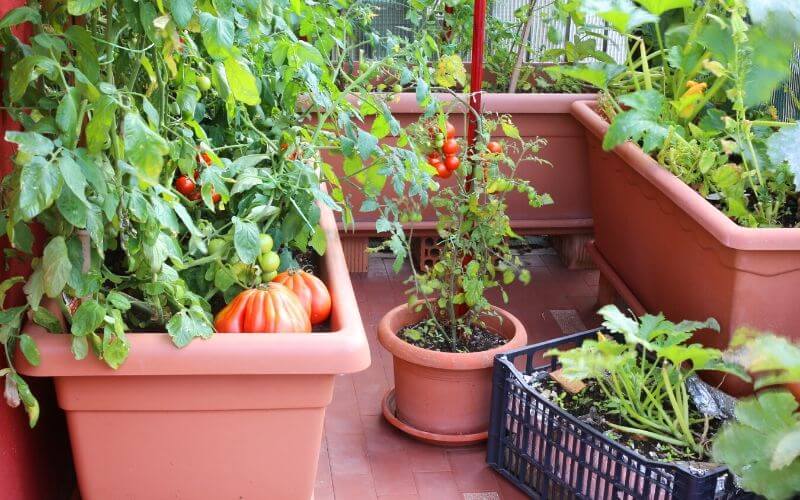
A lack of property or gardening space doesn’t mean that you cannot grow your own fresh vegetables. In the last decade, container gardening has exploded as people living in cities found the desire to grow their own food.
Before we look at these veggies, it’s important to note a few things.
First, almost all vegetables CAN be grown in a container. You might need to find a massive pot, but so long as you have a spot for the container, it’s a possibility. So, if there is something you want to grow in pots, you can do it.
Second, on the flip side of what I just said, you also should understand some things won’t produce as well in containers.
You might end up with a smaller harvest because the root system wasn’t able to spread out as well as it can when planted in the ground.
Don’t let that stop you. Container gardening is all the rage right now for good reasoning, and you can fill your patio with plants overflowing with fresh food for your dinner table.
The growing your own food movement has taken off, even in cities where people have little to no yard space. Many varieties of vegetables thrive in containers, so there is no reason why you cannot have a vegetable garden solely in containers.
Pots can fit in every corner and table possible, so if you’re interested in freshly grown veggies in containers, here are 15 easiest vegetables which are particularly suitable for container garden.
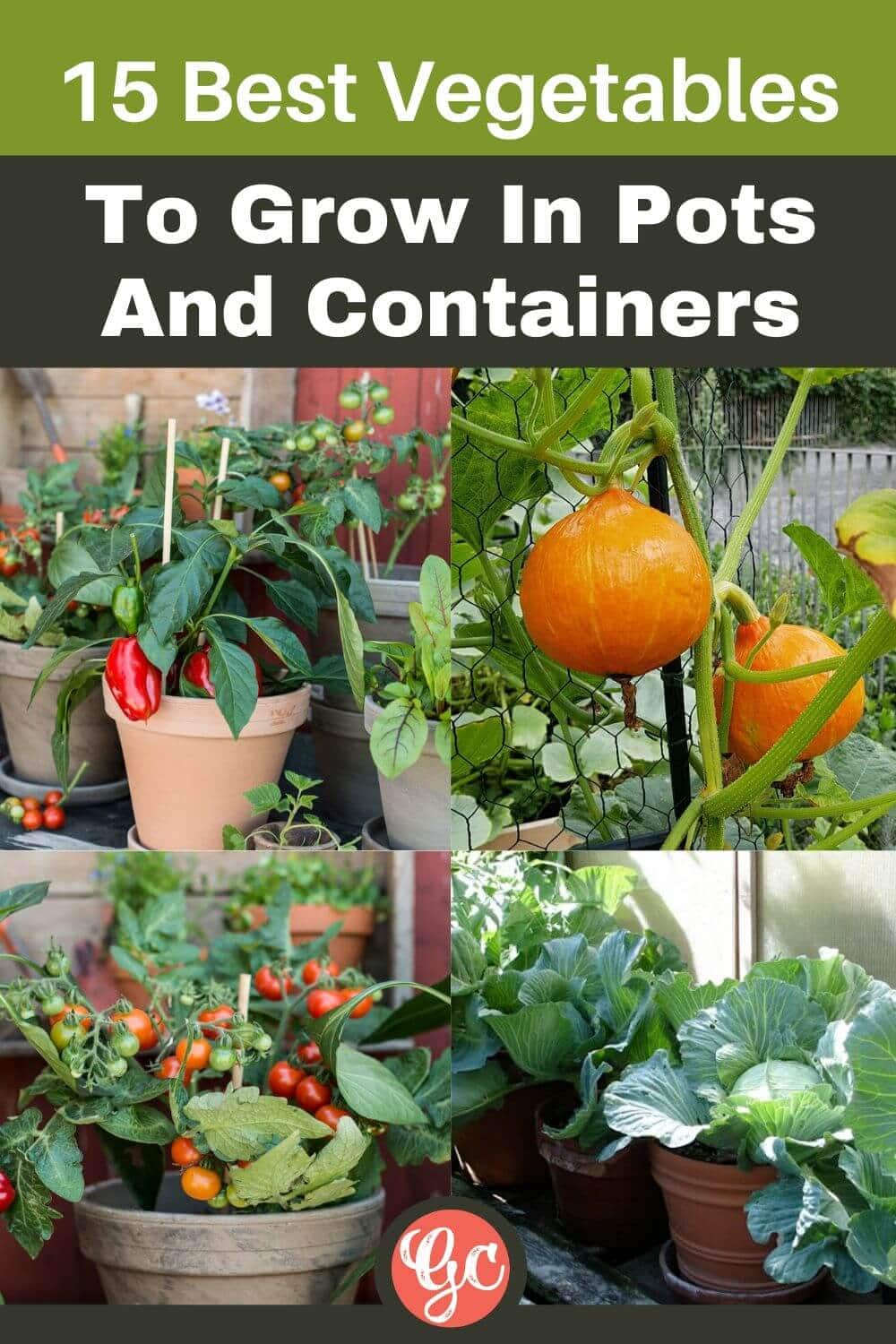
15 Easiest Vegetables to Grow in Pots And Containers
There are plenty of vegetables that you can can grow in pots, including tomatoes, potatoes, peppers beans, beets, swiss chard, radishes, peas, carrots, cucumbers, pumpkins, zucchini and other leafy greens to grow in containers are spinach and kale.
Not only do these grow, but they’ll grow well and provide you with an exceptional harvest this growing season.
Let’s take a look at 15 vegetable varieties that you can grow in containers and pots.
1. Tomatoes
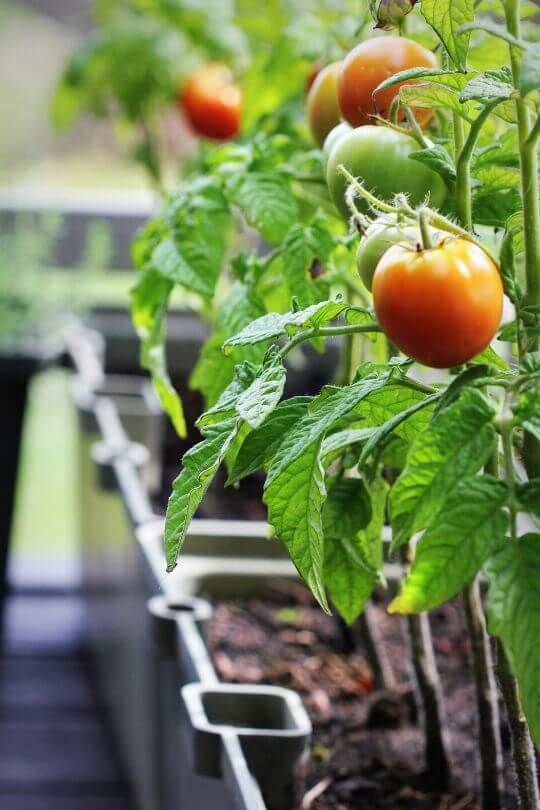
Most people know that you can grow tomatoes in containers. Without a doubt, tomatoes can be considered one of the most productive veggies that you can grow pots.
Tomatoes do not like cold weather AT ALL! Make sure you don’t put the plants out too soon, especially if there is a frost risk.
Tomatoes cannot survive through a frost. They do need to harden off or gradually acclimated to live outside before you put them into your garden.
There are two types of tomatoes: indeterminate and determinate. In general, determinate varieties are the best for containers because they aren’t as large, but they do harvest all at one time, so be prepared to preserve all of the tomatoes quickly.
Indeterminate containers can be huge, some reaching heights as tall as 6 feet tall!
As you can imagine, this type requires a large pot, typically a 15-gallon container, as well as a support system for the stem.
2. Potatoes
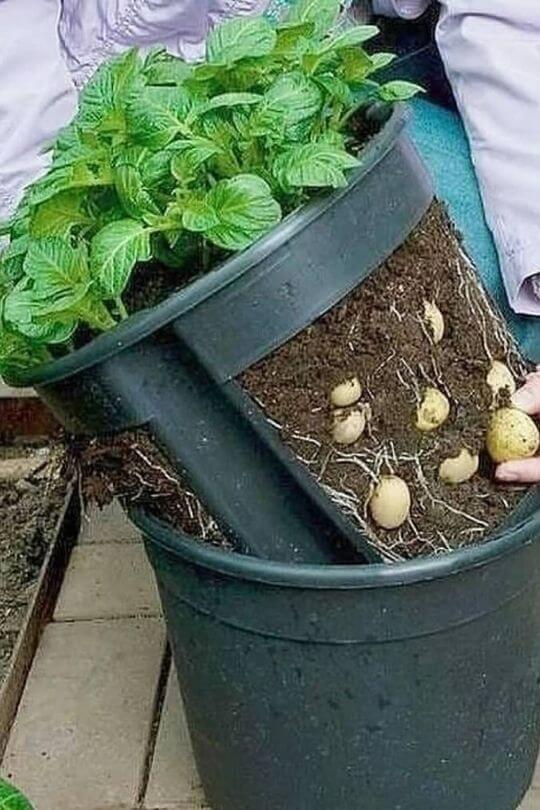
Growing potatoes in containers are one of the easiest ways to grow them. Since you need to continue to mound the dirt over the plants as they grow, containers make the process easier.
It does require a lot of soil and water to grow potatoes in pots, but it’s worth doing so because fresh potatoes are delicious.
Using containers instead of in-ground gardening reduces the risk of fungus and blight, which spread much easier when in-ground rather than in a pot.
You need large containers with plenty of drainage for potatoes. One option is to grow potatoes in large grow boxes, or you can use grow bags.
No matter what container you decide to use, make sure you put it in a location that has 6-8 hours of sunlight and that you consistently water.
3. Peppers
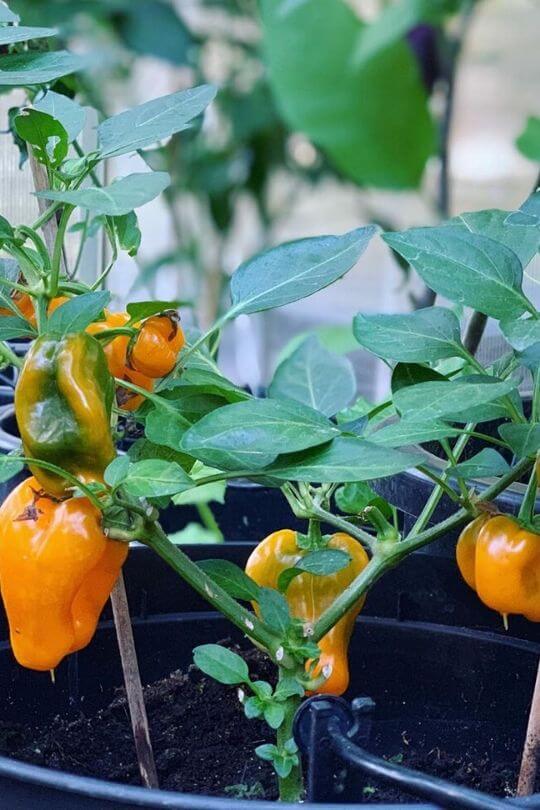
Another vegetable to grow in pots is peppers. When grown in containers, peppers are productive, and it helps reduce the cross-pollinating between types of peppers.
Both hot and sweet peppers can be grown in containers, and they do well in grow boxes. There are some colorful peppers out there that look wonderful in your garden.
Each pot needs to be at least 12 inches deep for ideal growth. The pots must be kept somewhere that receives 6-8 hours of sunlight, but ideally, the plants would receive 8-10 hours of sun.
Peppers do need good drainage in the containers, and you should consistently water. However, overly wet soil is bad for peppers; they do not like standing water.
When you grow peppers in containers, you might consider moving the pots instead during stormy weather to prevent the soil from getting too wet.
4. Beans
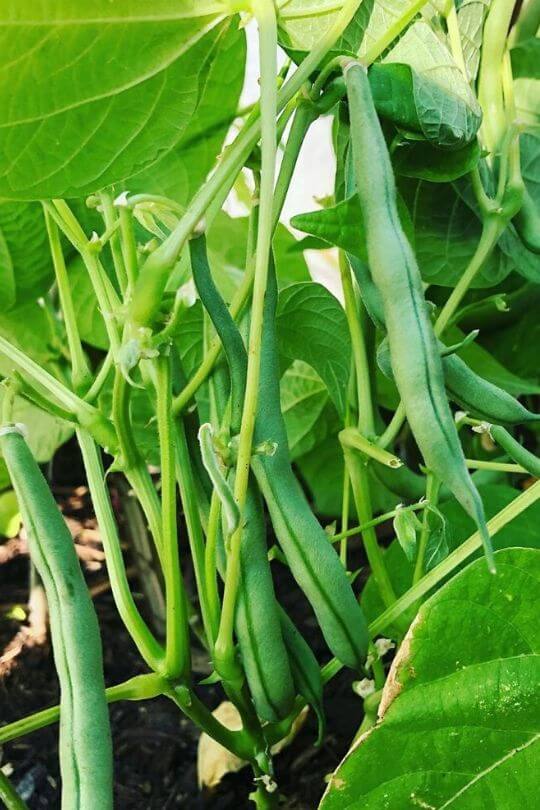
Don’t think fresh green beans are out of your reach. They make the perfect addition to any patio or balcony.
First, you need to pick the right container. The pot needs to have a minimum pot depth of 12 inches. Beans don’t like standing water, so make sure the pot has plenty of drainage holes.
Then, you need to decide if you want a bush variety of beans that doesn’t require any extra support or if you want a pole bean that does need a trellis.
Pole beans are a good choice if you want to take advantage of vertical space.
They can grow up existing fences and support systems, as well as walls. At the same time, pole beans take longer to produce a harvest.
Bush beans are smaller plants, typically 18-24 inches tall, and they produce a harvest in 60 days or less. Depending on your growing zone, you might be able to have two plantings of beans!
5. Beets
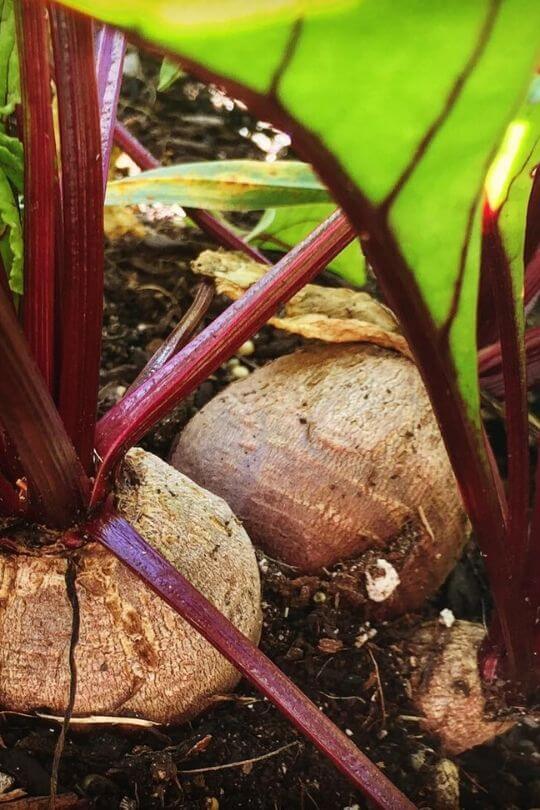
You might be surprised to see a root crop on this list, but surprisingly, root crops do exceedingly well in containers because you can ensure the soil stays fluffy rather than compacted.
Beets are perfect for growing in small spaces, so you can see why they’re great for container gardening.
The container you select needs to be 12-18 inches in depth. The depth of your container is the most important consideration because they need to be able to grow and develop freely. A minimum of 12 inches deep is ideal for adequate root growth.
Keep your containers in full sunlight, which is considered 6 hours of sunlight each day.
Be sure that you keep the soil pH level between 6.0 to 7.5. You can add some wood ash to increase the acidity in your soil.
6. Swiss Chard
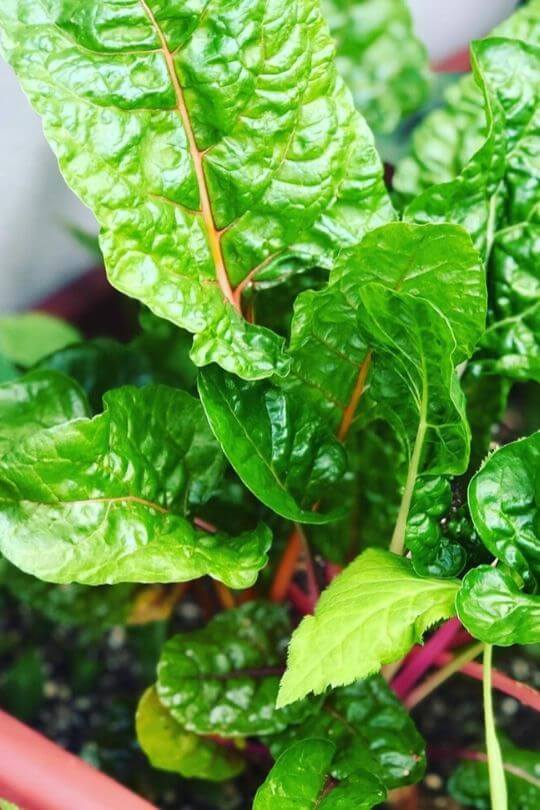
Anyone who loves container gardening can tell you that greens are a fantastic choice. Swiss chard is often an underrated plant, which is saddening because they come in a variety of colors. If you want a colorful garden, it would be a shame not to include as much chard as possible.
Consider a container that is at least 8 inches deep; many gardeners like long containers that can hold multiple plantings of chard together. That makes taking some for salad even easier.
Rainbow chard is an excellent variety to plant. It comes mixed with red, white, pink, and yellow stalks. In 50-60 days, it can be ready to harvest.
7. Lettuce
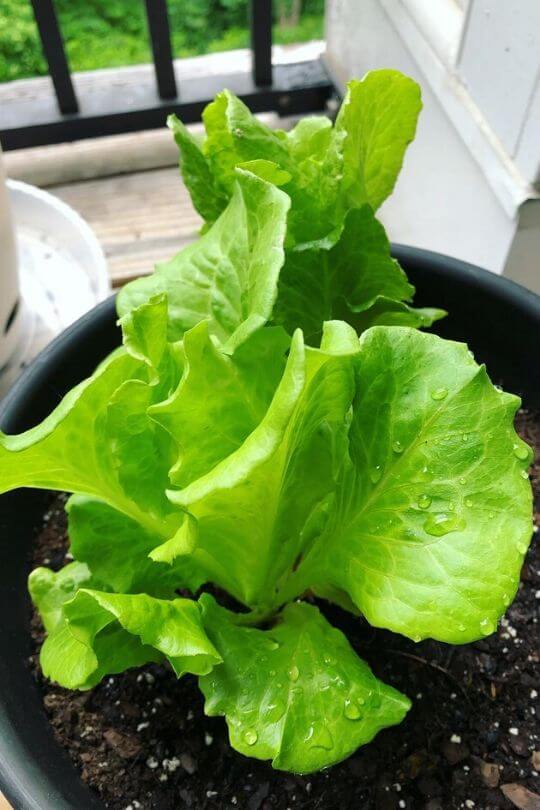
Here is another green that you can grow in containers, and who doesn’t love lettuce? You have the chance to harvest some leafy lettuce several times throughout your growing season.
Lettuce is a cool-season crop that you can plant several weeks before your final frost date in your area.
You’ll want to select a wide planter that is at least six inches deep. That allows you to plant several things of lettuce.
If you’re growing leaf lettuce rather than head lettuce, you can grow them closer together, typically 4 inches apart.
Aside from picking the right container, make sure you use a well-draining soil and water often. Lettuce needs plenty of moist soil, and containers dry out faster than dirt in the ground.
8. Radishes
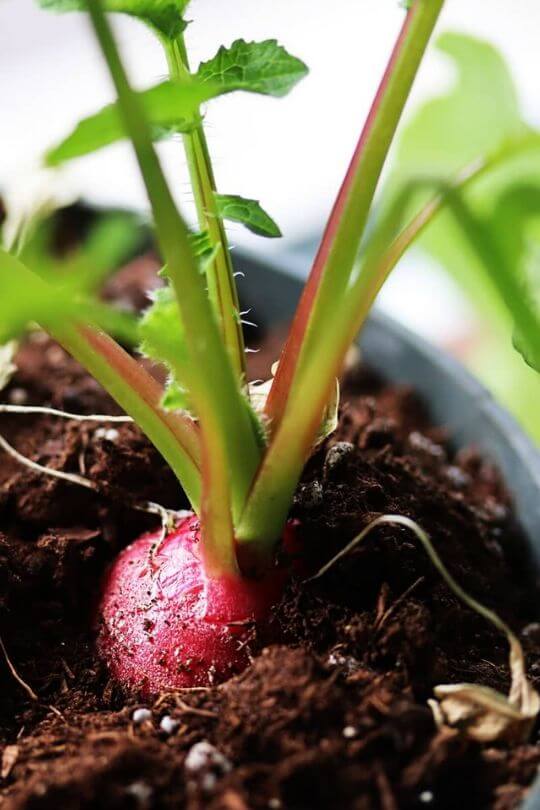
Here is another root crop that does exceptionally well in containers. Radishes are often underrated or passed over by gardeners,
but they’re one of the quickest growing veggies. They make great additions to children’s gardens as well because they can reach harvest in as little as 30 days.
Since these are root crops, you need to ensure the soil is nice and fluffy for optimal growth.
Radishes prefer containers that are, at least, six inches deep, but if you want to grow bigger varieties, pick pots that are 8-10 inches deep. Each radish needs three inches of space.
9. Spinach
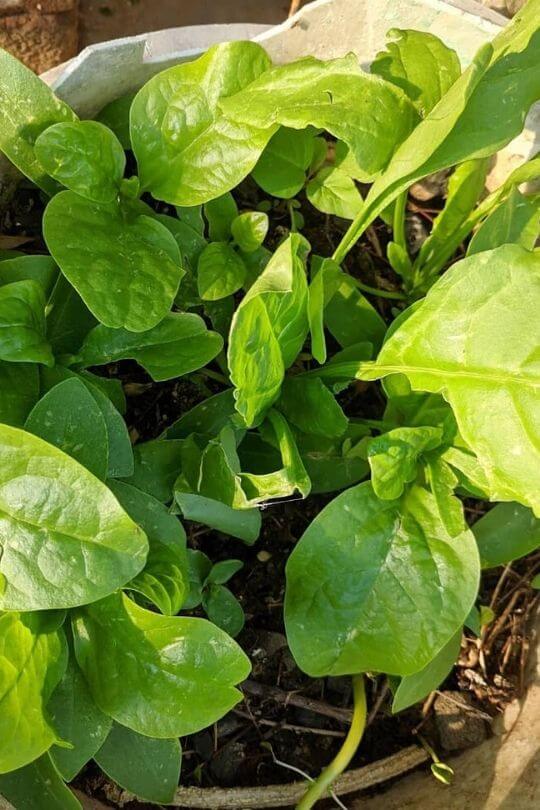
Spinach is one of the best vegetables to grow in pots. It can grow well in partial shade or full sunlight, and it easily adapts to all kinds of space.
You can even grow spinach indoors on a sunny windowsill; it doesn’t tend to be too picky.
The containers you use to grow spinach needs to be at least 6-8 inches deep. It’s more important to select a full pot rather than a deep one.
10. Peas
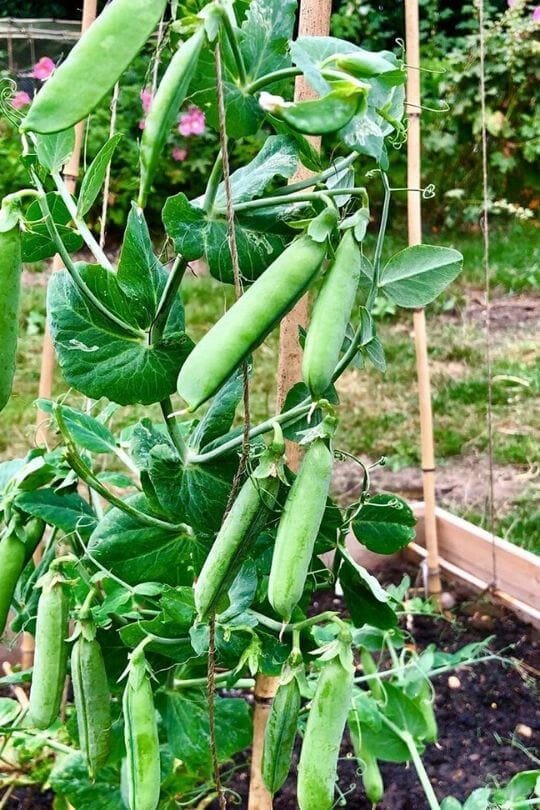
You might not think that you can grow peas in containers because they grow up a trellis or support system.
If you pick a dwarf or bushy type of peas, growing in pots isn’t a huge deal at all. Plus, kids love growing peas; you might be surprised how much your kids love fresh peas.
Peas are a cool-season crop, so it needs to be planted in the spring when the temperatures aren’t too hot or too cold.
They don’t need a large pot; it’s more important to have a full pot than it is to have a deep one. All you need is a container that is 6-8 inches wide.
Peas grow quickly without you needing to give them too much attention or work.
Since they’re a cool-season crop, frequent, regular waterings are preferred to keep the soil slightly moist. They need to be planted somewhere that they can receive full sunlight.
Something unique about growing peas is that you can plant them twice in a year for an even more abundant harvest. Plant them in the early spring and then again in the fall. They’re also ideal for succession planting.
11. Carrots
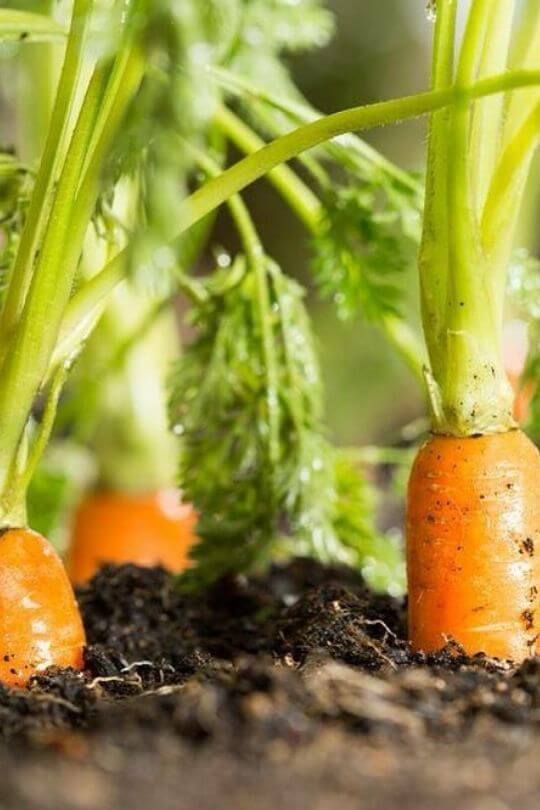
Carrots are another root crop that grows well in containers, and they’re a cool-weather crop that can be planted 2-3 weeks before the final frost date in your area.
One thing to remember about growing carrots in containers is that they do need regular watering and moist soil.
If the soil dries out, the roots start to dry out and crack, leading to a bad harvest.
Like other root crops, carrots need a deeper pot, at least eight inches deep. The roots are what you want here! Keep the soil as fluffy as possible rather than compact.
12. Cucumbers
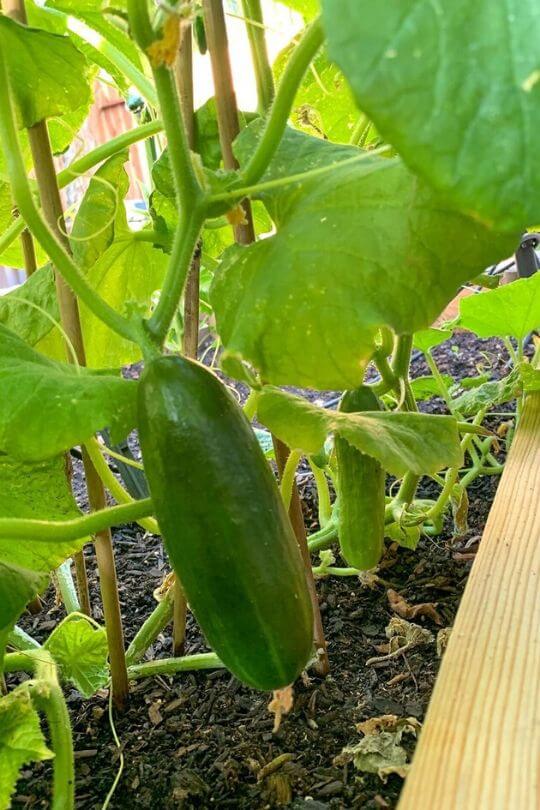
If there is one veggie that screams summertime, it’s cucumbers. Who doesn’t love fresh cucumbers in their salads?
You can enjoy them too by growing cucumbers in containers on your patio.
There are a few things that you need to know about container gardening and cucumbers. First, they’re heavy feeders, and they need regular watering.
Do not let the soil dry out, and make sure it has plenty of compost added for nutrients before planting.
You need to pick a large pot that is typically 5-gallons or more. They need plenty of space to grow, and you need space to add a support system in the container for the vines to grow up.
13. Kale
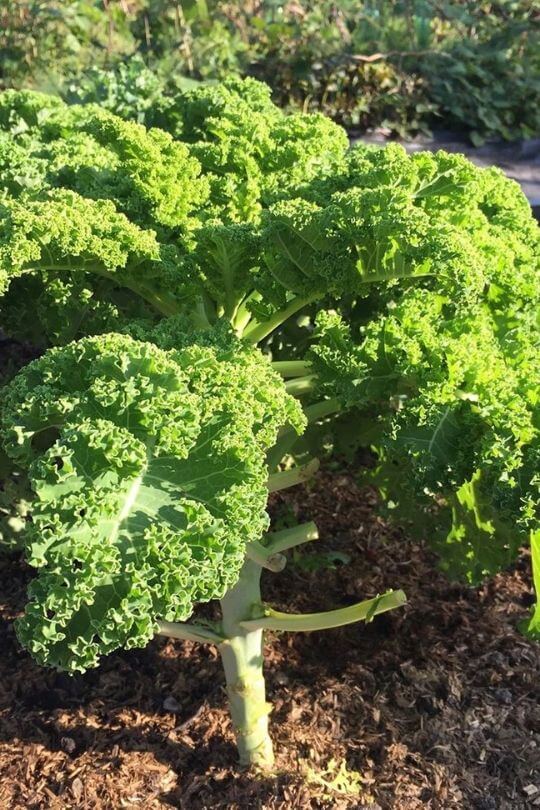
Looking for a veggie that does well in containers and is also packed full of nutrients? Kale is the perfect option.
It’s a powerhouse green full of nutrients and vitamins that is versatile; you can use it in so many ways.
Kale also grows fast. If you have 3-4 plants, you can feed a family of four weekly with the plants. They grow so prolifically!
You will need a pot that is 12 inches in diameter and 8 inches deep, and don’t forget you need a well-draining, nutrient-dense potting mix for your crops.
14. Pumpkins
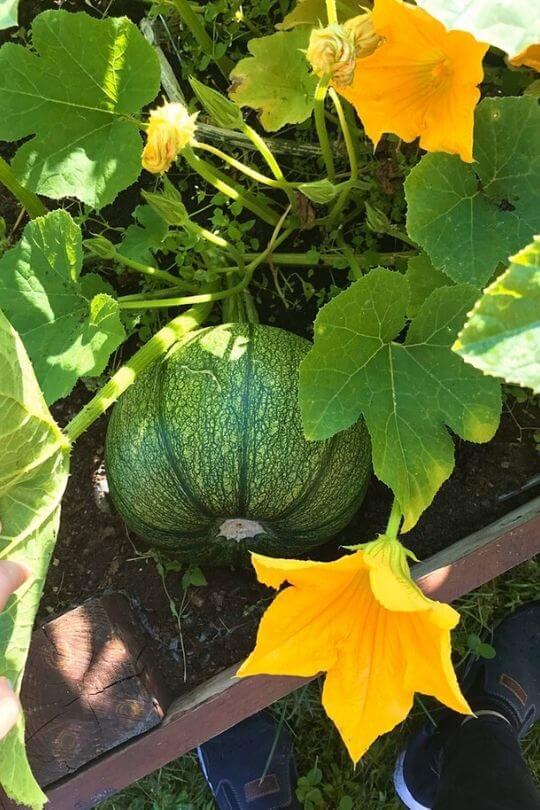
Did you have no idea that growing pumpkins in containers is possible? Well, you can, so long as you have a large container.
Pumpkins require a container that is 20-25 gallons at minimum. If you’re trying to grow large pumpkins, you might need an even larger container.
Aside from a large container, pumpkins are heavy feeders, so you’ll need to fill the container with half compost to provide the plant with plenty of nutrients for proper growth.
You’ll also need to fertilize every other week or your plant will fail to fruit and come to harvest.
There are so many awesome pumpkin varieties to grow. You can try some miniature pumpkins that are edible and also work as decorations. Another option is to grow small 2-to-3lb pie pumpkins for all of your kitchen adventures with baking.
15. Zucchini
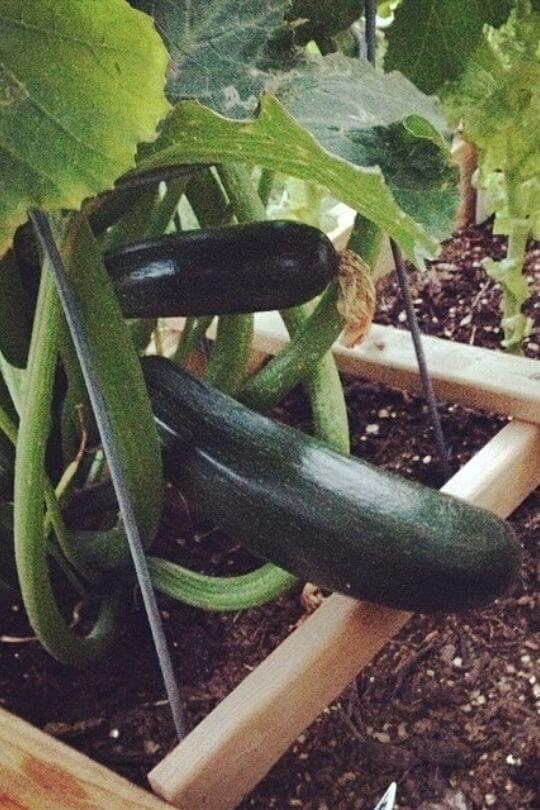
You might not think of growing zucchini in pots, but it’s possible, and you can even train them to grow up a trellis for additional support.
Since these are large plants, you need a large sized container to match the growth and size of zucchini.
You’ll want a pot that is at least 24 inches in diameter with a minimum depth of 12 inches.
Zucchinis are heavy feeders like many varieties of squash. So, be sure to add plenty of compost to your soil before planting zucchini seeds. Plan to add fertilizer several times throughout the growing season as well.
If you want, you can add a trellis system to support the zucchini vines. An A-shaped trellis is a great choice, and you can secure the vines with garden tape. Then, you can use pantyhose to act as a sling to support the zucchini as they grow on the plant.
Start Growing in Pots
If you don’t have space to garden, you can try some of the best vegetables to grow in pots. Container gardening is an efficient, versatile way to grow fresh veggies at home for your family if you don’t have garden space.

Written By
Amber Noyes
Amber Noyes was born and raised in a suburban California town, San Mateo. She holds a master’s degree in horticulture from the University of California as well as a BS in Biology from the University of San Francisco. With experience working on an organic farm, water conservation research, farmers’ markets, and plant nursery, she understands what makes plants thrive and how we can better understand the connection between microclimate and plant health. When she’s not on the land, Amber loves informing people of new ideas/things related to gardening, especially organic gardening, houseplants, and growing plants in a small space.

I have two 5′ x 8′ x 12″ high garden beds made out of redwood. They are on 30″ legs above the ground. Therefore the beds have a wood floor. Should I drill a lot of holes for drainage? Thx u.